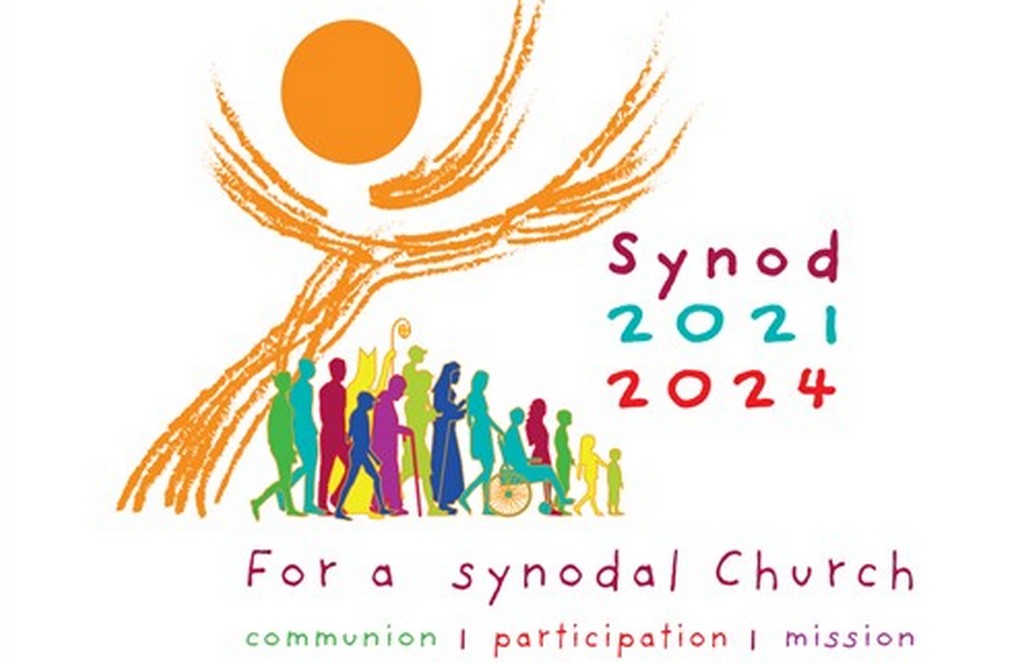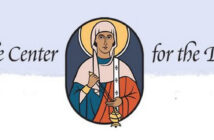Source: Peter Anderson, Seattle USA
The first session of the XVI Assembly of the Synod of Catholic Bishops will be held at the Vatican during the period October 4-28, 2023. The Synod will be devoted to the subject: For a Synodal Church: Communion, Participation, Mission. On September 19, the Vatican provided the final list of the Synod participants. https://www.synod.va/en/news/the-participants-of-the-16th-general-assembly-of-the-synod-of-bishops.html Of the twelve “fraternal delegates” listed, three are from the Orthodox Churches of the Byzantine tradition, and three are from the Oriental Orthodox Churches. With respect to the Dicastery for Promoting Christian Unity, Cardinal Kurt Koch is listed as a participant, and Father Hyacinthe Destivelle O.P. is listed under “experts and facilitators.” The three “fraternal delegates” from the Orthodox Churches are: (1) Ecumenical Patriarchate – Metropolitan Job (Getcha) of Pisidia, Co-President of the International Joint Commission for Theological Dialogue between the Orthodox and Catholic Churches; (2) Serbian Patriarchate – Bishop Nektarije (Samardžić) of Jegar, vicar of Patriarch Porfirije and previously a priest of the British-Scandinavian Eparchy; and (3) Romanian Patriarchate – Metropolitan Iosif of Western and Southern Europe. The fact that Serbia was one of the three Local Orthodox Churches invited to attend reflects, in my opinion, the warming of relations between the Serbian Patriarchate and the Vatican since the election of Porfirije as Patriarch.
There is a significant question as to whether the Orthodox view of synodality will be seriously considered at the Catholic synod on synodality. During the pontificates of Pope John Paul II and Pope Benedict XVI and during the first year of the pontificate of Pope Francis, all of the papal references to “synodality,” except for two, were made in connection with the Eastern Churches. For example, in the Apostolic Exhortation Evangelii Gaudium (November 24, 2013), Pope Francis stated: “To give but one example, in the dialogue with our Orthodox brothers and sisters, we Catholics have the opportunity to learn more about the meaning of episcopal collegiality and their experience of synodality. Through an exchange of gifts, the Spirit can lead us ever more fully into truth and goodness.” One would therefore expect that the Orthodox experience of synodality would be a major subject of discussion at a Catholic synod on synodality. In a positive development, an international symposium on synodality in the Orthodox and Oriental Orthodox Churches was held at the Pontifical University of Saint Thomas Aquinas (Angelicum) in Rome on November 2‒5 and 23‒26, 2022, upon the initiative of the Pro Oriente Foundation (Vienna) and of the Angelicum Institute for Ecumenical Studies. The entire symposium may be watched at https://www.youtube.com/@prooriente5059. Unfortunately, the experience of the Orthodox churches with respect to synodality received almost no attention in the Instrumentum Laboris made public on June 20, 2023. https://www.synod.va/content/dam/synod/common/phases/universal-stage/il/ENG_INSTRUMENTUM-LABORIS.pdf The Instrumentum Laboris is the very important “working document” for the first session of the Synod and was prepared after the completion of the “listening phase” involving extensive consultations at the diocesan, conference, and continental levels. In this 60-page document, the word “Orthodox” is used in only three sentences. The most relevant sentence is the following: “The rediscovery of synodality as a constitutive dimension of the Church is one fruit of ecumenical dialogue, especially with the Orthodox.” See page 33. However, nothing in this very important document describes for the participants the concept of synodality from the Orthodox perspective. It is also totally unrealistic to expect that the very limited time allowed for the “fraternal delegates” to speak at the Synod will allow them sufficient opportunity to adequately describe the Orthodox experience of synodality. Rather than being a major subject of discussion at the Synod on synodality, I personally predict that the Orthodox experience of synodality will hardly be on the Synod’s radar scope. I hope and pray that I will be wrong in my prediction.
Bishop Emmanuel Nin O.S.B., who is the Apostolic Exarch for the Catholics of the Byzantine rite in Greece and who have been appointed by Pope Francis to be a participant in the Synod, has written a commentary concerning the forthcoming synod on the Exarchate’s website. https://elcathex.gr/%CE%BC%CE%B5%CF%81%CE%B9%CE%BA%CE%AD%CF%82-%CF%83%CE%BA%CE%AD%CF%88%CE%B5%CE%B9%CF%82-%CF%80%CE%B5%CF%81%CE%AF-%CF%84%CE%B7%CF%82-%CF%83%CF%85%CE%BD%CE%BF%CE%B4%CE%B9%CE%BA%CF%8C%CF%84%CE%B7%CF%84/ In the commentary, he stated:
Of course, this exercise of ministry / service / authority in the Eastern Churches definitely has a synodical dimension in that the decisions taken at a fully collective level belong to the synod of bishops, understood as a gathering of bishops together with their superior: Patriarch, archbishop or metropolitan. Therefore, in the East, and for each of the Churches, there is talk of a course of the synod of bishops in a collective way. However, and picking up the thread from the beginning, if the West understands synodality as a place or as a moment where everyone, laity and clergy, act together in order to arrive at some ecclesiastical, doctrinal, canonical, disciplinary decision, whatever it may be, it becomes clear that such synodality does not exist in the East.
Although not Orthodox, Synod participants from the Catholic eastern churches may perhaps provide some insight to the Synod about the eastern perspective of synodality. However, there is the possibility that the Synod may follow more of a Protestant model of synodality than an Orthodox model.
There have been several recent events of interest in Ukraine. On September 11, the feast of the beheading of St. John the Baptist, the Kyiv Theological Academy and Seminary (KTA) of the OCU observed the opening of the 2023-2024 academic year at its new location, the Pokrovsky Monastery in the Holosiiv district of Kyiv. The liturgy was celebrated by Metropolitan Onufry, the primate of the UOC. http://kdais.kiev.ua/event/11092023-2/?fbclid=IwAR22VZSu183R7Fc7g-DcLeCWb75jFn1CYkmXLCILj8SCikCFlNJo0I1sxgE From photos it appears that the Pokrovsky Monastery has very nice physical facilities for the KTA, but there is the spiritual disadvantage of no longer being at the very holy site of the Lavra. A good group photo of all of the students on the opening day can be seen at https://news.church.ua/2023/09/11/predstoyatel-ocholiv-bogosluzhinnya-z-nagodi-svyata-usiknovennya-glavi-ioanna-xrestitelya-ta-pochatku-navchalnogo-roku-u-kdais/#2023-09-16 In connection with the move, the UOC has surrendered to the National Reserve of the Lavra the keys to Buildings 63 and 64, which the KTA had previously occupied. https://www.ukrinform.ua/rubric-kyiv/3760404-u-niznij-lavri-pid-kontrol-zapovidnika-povernuli-vze-13-obektiv.html It is reported that the UOC will move its administrative headquarters from the Lavra to the area of the Cathedral of the Resurrection being constructed near the Lybidska metro station in Kyiv. https://risu.ua/upc-mp-perevozit-svij-kerivnij-centr-z-lavri-do-nedobudovanogo-soboru-na-libidskij_n142365 The cathedral has been under construction for many years and will be the largest church in Ukraine. The move of the administrative offices may have the effect of encouraging completion of the cathedral.
With respect to the current conflict between the UOC and the Zelensky government, the courts have been a very important venue for the confrontations. On September 14, the Northern Commercial Court of Appeals issued a decision requiring the UOC to remove the small Church of the Tithe Church of the Nativity of the Most Holy Theotokos, from the grounds of the National Museum of the History of Ukraine. The Court of Appeals has posted a detailed summary of its decision at https://nag.court.gov.ua/sud4873/pres-centr/news/1477175/ . The small church is located approximately 30 meters from the building of the National Museum, 40 meters from the open area believed to be the location of the historic Tithe Church, and 85 meters from the reconstructed St. Andrew’s Church. The reconstruction of the St. Andrew’s Church was completed in 1987 using the drawings of Rastrelli, the original architect. In August 2001, the Cabinet of Ministers granted permission to the UAOC (now part of the OCU) to use the St. Andrew’s Church on a daily basis for religious services. https://zakon.rada.gov.ua/laws/show/371-2009-%D0%BF#Text The presence of the UAOC at St. Andrew’s may have been one of the motivating factors in the decision of the UOC to establish its own church nearby. The small UOC church is named after the Tithe Church, the first stone church in Rus’. The Tithe Church was built by St. Volodymyr, who allocated a tenth of his income for its construction and maintenance. The church was destroyed by the Mongols in 1240. During the period 1828 to 1840, a new Tithe Church was built at the approximate location of the original Tithe Church. This building was destroyed by the Soviet authorities in 1935. https://en.wikipedia.org/wiki/Church_of_the_Tithes
In 2004 the head of the National Museum gave permission to the UOC to build three small kiosks (each covering 20 sq. m.) on the property of the National Museum with ownership of the land remaining with the State. In 2012 a court upheld the ownership of these three structures by the UOC. https://www.ukrinform.ua/rubric-kyiv/3761313-apelacijnij-sud-zobovazav-demontuvati-hrammaf-bila-desatinnoi-cerkvi.html Subsequently, the UOC, without any authorization by the government, built the present structure which occupies twice the area of the three kiosks. Since the building of the three kiosks, the entire UOC project has been the subject of great public controversy. For example, the publication Left Bank posted from 2011 to 2018 a total of 54 articles relating to the Tithe Church. https://lb.ua/tag/10252_desyatinna_tserkva The Northern Commercial Court of Appeals in its decision of September 14, 2023, concluded that the plot of land on which the present structure was built was not given to the UOC for its ownership or use. In addition the present structure was built without government approval of the project and was built without obtaining construction permits. Accordingly, the Court ordered the UOC to remove the structure from the land of the National Museum. It is very likely that the decision will be appealed by the UOC to a higher court.
On September 12, Patriarch Kirill spoke at the end of the Liturgy at the Lavra in St. Petersburg. http://www.patriarchia.ru/db/text/6058732.html The Liturgy celebrated the feast of the transfer of the relics of St. Alexander Nevsky. The Patriarch’s words including the following:
Today Russia is faced with the task of emerging victorious from the struggle that has been unleashed against us by the forces of evil. And there is no need to downplay the complexity of the moment we are experiencing! Today we need the mobilization of everyone – both the military and political forces; and, of course, the Church must be mobilized first. In order to pray for our authorities and army, but also in order to be there, at the forefront.
These words are just further proof that Patriarch Kirill unequivocally champions the Russian side in the Russia – Ukraine war and considers the Ukrainian side to be evil. The fact that such words received very little media attention demonstrates that such words from the Patriarch are now expected and are no longer news.
On September 18, Pope Francis met with the new Russian ambassador to the Holy See, Ivan Soltanovsky. After the meeting, Soltanovsky told the Russian news agency RIA Novosti: “Pope Francis warmly recalled his meeting with Patriarch Kirill in Havana and expressed hope that it would not be the last and that he would be able to see the Primate of the Russian Orthodox Church again.” https://ria.ru/20230918/papa-1896993674.html With respect to this comment, Father Nikolai Balashov, advisor to Patriarch Kirill, informed the news agency that the Russian Orthodox Church is open to a new meeting between the Patriarch and the Pope, but that initiatives in this regard should come from the Vatican. https://ria.ru/20230920/rpts-1897639735.html Although Pope Francis may be interested in a second meeting, he cancelled the meeting with Patriarch Kirill planned for June 2022 in Jerusalem. It is therefore very likely that Pope Francis was expressing to the ambassador a hope relating to a period after the war in Ukraine.
Peter Anderson, Seattle USA




